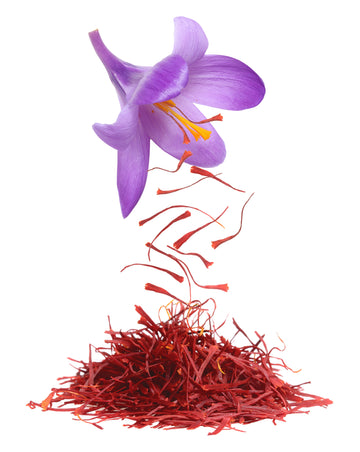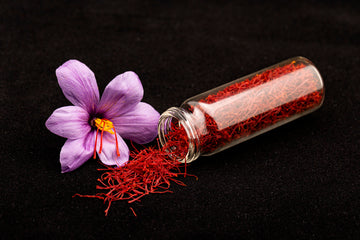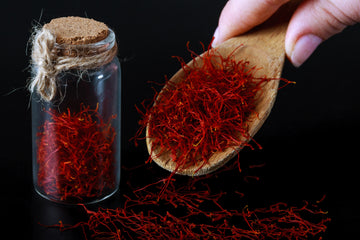
Why Safi Saffron? - Historical Significance In Afghanistan
The history of Afghanistan is entwined with the fascinating story of saffron, the valued spice that gives food a rich aroma and a golden tint. Saffron's vital position in the region's cultural, economic, and social fabric dates back to ancient times and its cultivation and trading. Afghanistan is one of the world's leading saffron-producing areas, joining the ranks of its beautiful landscapes, unique climate and varied traditional agricultural products. Let's find out the importance of saffron in Afghanistan's history.
Afghani Saffron awarded 1st among 300 types of saffrons in Brussels by ITI also the Brussels-based world institute of Taste and Quality has declared that Afghani Saffron is the best and highest quality saffron in the world. [1]
Saffron in Afghanistan
In the 21st century, saffron production in Afghanistan has skyrocketed, from 2 tons in 2001 to an expected 35 tons in 2020. [2] Farmers in Afghanistan, especially women, have shifted their focus from growing opium to growing saffron. Herat is one of the most important centers for saffron production in Afghanistan and with good reason.
One of the most popular Herat gifts is saffron. In modern times, saffron cultivation has spread beyond Herat to include not only the provinces of Balkh, Bamyan, and Parwan but also Takhar, Qunduz, Badakhshan, and Faryab. Saffron thrives in cool environments but struggles in the heat of the tropics. Saffron is at its peak quality in cooler climates.
Historical Significance
Zarparan, meaning "gold strung" (referring to the flower's golden stamens or the golden hue it imparts when used as a flavoring), is an ancient name for saffron. It's a historical artifact from 3500 B.C. Saffron has long been the most expensive spice in the world, and its exact place of origin is still up for debate.
Most experts believe it originated in either the Herat Province of western Afghanistan or the Khurasan Razavi Province of eastern Iran, but the Mediterranean region and ancient Mesopotamia are also viable candidates.
This plant also originates in a wild form in Central Asia. Saffron's golden yellow hue comes from pigments inside the plant that also contribute to the plant's distinctive perfume and flavor. [3] This plant has been around since the seventh century BC.
Throughout history and throughout continents, saffron has played a significant role. This herb has been cultivated in Greece since before the Bronze Age. Saffron blossoms were traditionally harvested and utilized in natural remedies. [4] Saffron, prized for its use in fragrances and medicines, was gathered by ancient Mediterranean peoples near seaside cities.
The Assyrians and the Babylonians utilized it to treat gastrointestinal and renal disorders. Our cave paintings from 50,000 years ago in what is now Iraq employ saffron-based dyes to represent animals. Saffron was an ingredient in later Sumerian medicines and enchantments. However, saffron was not cultivated by the Sumerians. Instead, they chose to exclusively harvest the plant's beautiful blossoms.
They believed that saffron's healing qualities required a miracle from on high to fully manifest. [5] A situation like this proves that saffron was traded vast distances before the Minoan civilization of Crete flourished in the second millennium BC. The ancient Jewish faith also praised saffron for its sweet flavor, and this tradition dates back more than three thousand years.
Purity and Quality of Afghan Saffron
The saffron grown and harvested in Afghanistan where the unique climate and environment make it possible to produce the finest saffron in the world. [6] Several causes contribute to this difference. To begin, most farmers in Afghanistan still utilize time-honored methods that don't use synthetic chemicals like pesticides or fertilizers. This dedication to farming practices that the saffron retains all of its original qualities and health benefits.
Secondly, just the stigma of the Crocus sativus flower, which is what really produces the saffron, is picked while harvesting saffron in Afghanistan. This careful procedure ensures that the saffron remains unadulterated by any other elements of the flower. In addition, producers may pick just the most flavorful and potent stigmas thanks to painstaking hand harvesting.
Conclusion
Afghanistan's saffron sector has exploded in recent years, and with good reason: the spice is highly regarded for its rich history, pristine quality, and incredible rarity. Afghanistan's ancient agricultural methods, climate, and hand-harvesting techniques all combine to produce high-quality saffron. Safi Saffron, as a market leader, personifies these traits and has become a byword for quality in Afghan saffron. As saffron's distinctive flavor, scent, and health benefits continue to gain widespread acclaim, Afghan saffron and Safi Saffron, in particular, are well-positioned to dominate the international market.
References:
- Ministry spokesman Lotfullah Rashid Officials from the Ministry of Agriculture and Irrigation (MoAI). https://tolonews.com/business/afghan-saffron-named-worlds-best-third-time
- Khajeh-Hosseini, M., & Fallahpour, F. (2020). Emerging innovation in saffron production. In Saffron (pp. 205-216). Woodhead Publishing. https://www.sciencedirect.com/science/article/abs/pii/B9780128186381000125
- Moghaddasi, M. S. (2010). Saffron chemicals and medicine usage. J Med Plants Res, 4(6), 427-430. https://academicjournals.org/journal/JMPR/article-full-text-pdf/F6F1E8115978.pdf
- Golmohammadi, F. (2014). Saffron and its farming, economic importance, export, medicinal characteristics and various uses in South Khorasan Province-East of Iran. International Journal of Farming and Allied Sciences, 3(5), 566-596. http://ijfas.com/wp-content/uploads/2014/05/566-596.pdf
- Samanta, S. (1998). The Powers of the Guru: Sakti," Mind," and Miracles in Narratives of Bengali Religious Experience. Anthropology and Humanism, 23(1), 30-50. https://anthrosource.onlinelibrary.wiley.com/doi/abs/10.1525/ahu.1998.23.1.30
- Moradi, M. M., & Turhan, S. (2017). The importance of Saffron plant in Afghanistan’s agricultura. J. Biol. Environ. Sci, 11(33), 165-169. https://uludag.edu.tr/dosyalar/jbes/33/mak07.pdf




